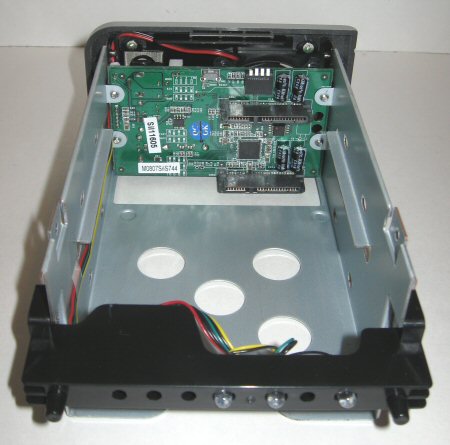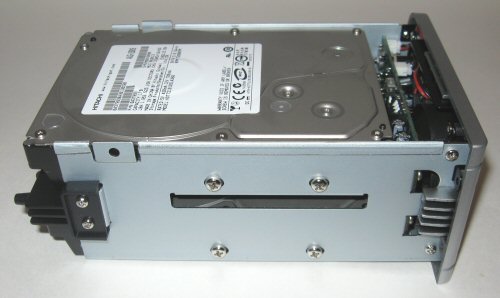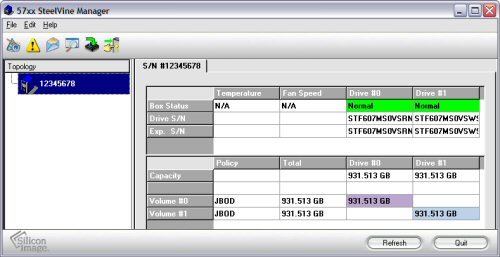Before using the X2-RAID, you'll need to install at least one hard drive. To begin, remove the four screws on the back of the enclosure and slide out the rear panel and inner tray.

The next step is to mount the hard drives to the tray. The easiest way to do this is to place the drives on the rails and line them up with the SATA connectors on the enclosure's backplane. Gently push the hard drives onto the connectors and then screw them into place. I recommend using the screws that come with the X2-RAID as they are low profile and will not cause the tray to hang up on the enclosure.


Before putting the tray back in the enclosure, you'll want to decide whether or not you're going to use the jumpers to select the RAID mode. If not, you can leave them as is and use the SteelVine Manager software to configure the X2-RAID.

With the hard drives installed, insert the tray into the enclosure and screw the rear panel into place. Once this is done, you go ahead and connect the USB (or eSATA) cable, plug in the power cable, and turn the enclosure on. If everything goes as planned, your computer should automatically detect the X2-RAID and install the necessary drivers.
If you opted not to use the jumpers, there is still one more step you need to do and that is install the SteelVine Manager software. The software on the CD is Windows only. However, Mac and Linux versions can be downloaded from Silicon Image's support website.

While the look of the SteelVine Manager software is a bit dated, it performs a number of tasks. Along with the ability to set the RAID mode, it monitors the status of the volumes and individual hard drives and can be configured to send an email alert if a problem occurs. The software is also used to rebuild and verify RAID arrays as well as update the enclosure's firmware.

As I mentioned earlier, the X2-RAID offers a number of RAID options. Along with the RAID 0, RAID 1, JBOD and BIG modes found on most 2-bay enclosures, it supports two multi-RAID modes, SAFE33 and SAFE50. If you decide to use these modes, the SteelVine Manager software will create two volumes, with one focusing on data protection (RAID 1) and the other providing increased capacity (BIG).

Take note that when using the RAID 1, SAFE33 and SAFE50 modes, it will take some time for the X2-RAID to build the mirrored volume. With two 1TB hard drives configured for RAID 1, it took more than 5 hours to complete the build.

